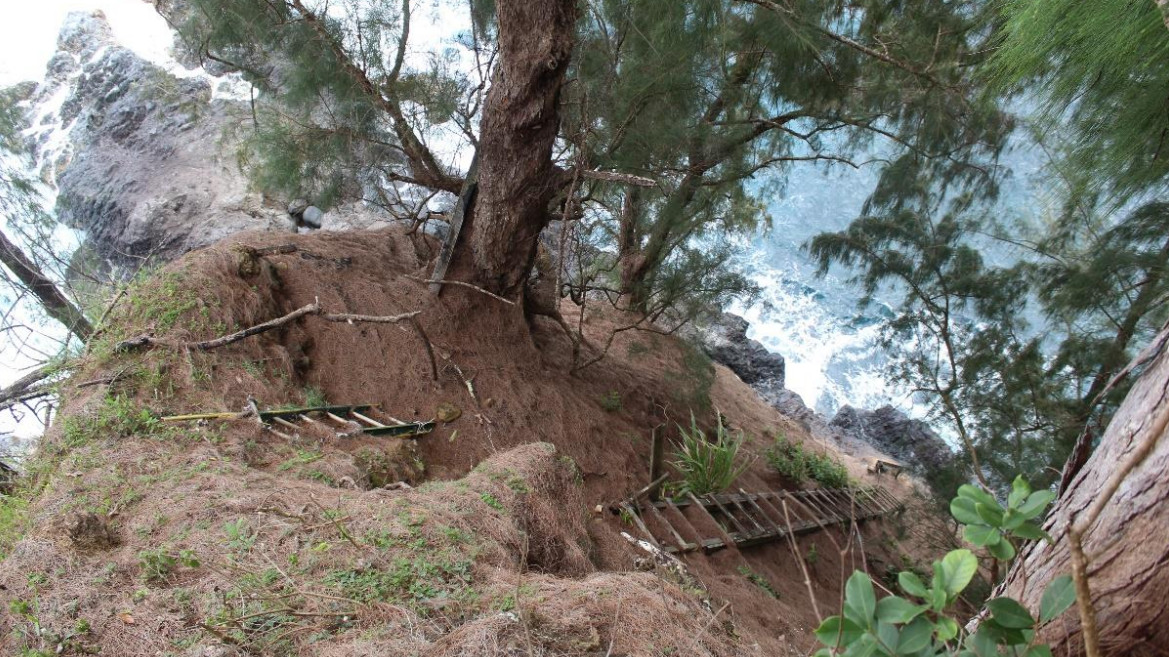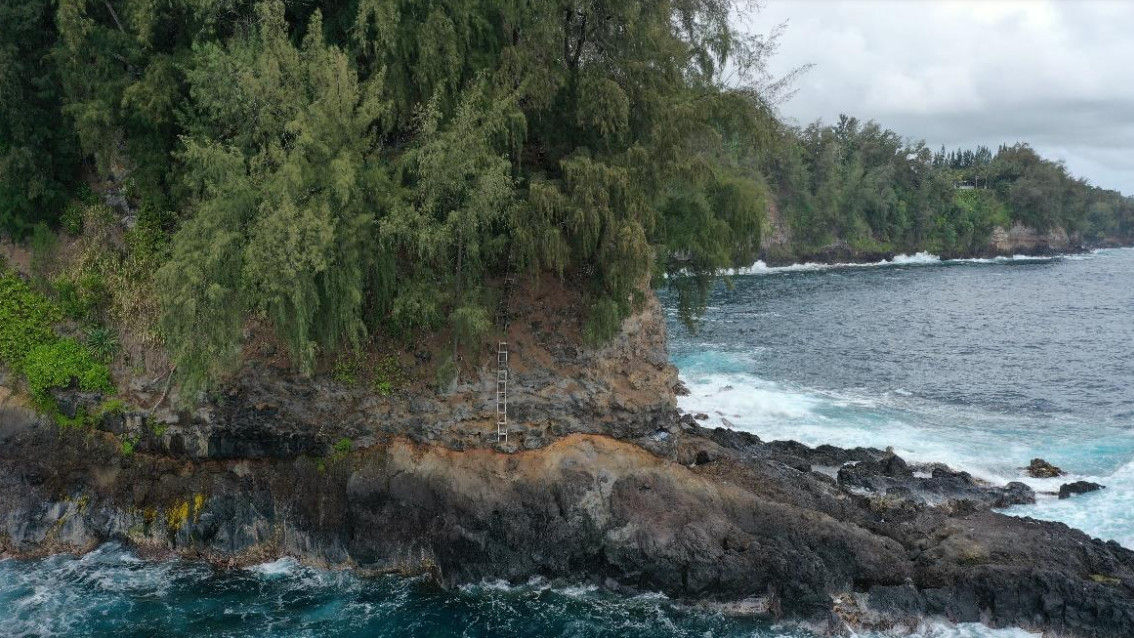
Figure 13 from the Holcomb Single-Family Residence at Honomū draft Environmental Assessment. Wooden ladder descending the coastal cliff to the rocky shoreline below.
(BIVN) – Fishing access via ladder along a Honomū seacliff will be preserved, according to a draft environmental assessment for a single-family residence in the coastal conservation district.
The draft EA for the Holcomb Single-Family Residence at Honomū was published in the Hawaiʻi Office of Environmental Quality Control’s July 23rd Environmental Notice.
The applicant is proposing to build a 1-story, 3 bedroom home home on his 6.485-acre property near Honomū. The home will be set back 130 feet from the sea cliff. “The cultural practice of descending the tall seacliff via ladders and ropes to fish will be preserved through access easements in favor of a local fishing association,” the draft EA states.
“A path to the top of a shoreline point accessed only by a series of now-defunct ladders but formerly used for shoreline fishing will be maintained,” the document says. “No valuable cultural resources and practices such as shoreline access, fishing, gathering, hunting, or access to ceremonial sites would be adversely affected in any way.”
These details are also provided:
The rocky shoreline fronting the property is at the foot of steep coastal sea cliffs from 120 to 170 feet tall. A fishing spot called “Ladders” was formerly accessed by fishermen who used wooden ladders for access. The ladders have deteriorated and fisherman only rarely rappel down the cliffs, but local fishermen wish to preserve access. The applicant proposes coastal access corridors and provision of a license to the Makahanaloa Fishing Association to provide access, assist in management, and mitigate the potential liability to the property owner from claims for injury that could occur when attempting to access the shoreline. A parking area will also be provided for daytime fishing and access at night for those actively engaged in night fishing activities through a registration system managed by the Association. Informational and warning signage will also be provided.
Addressing other potential concerns, the document says the project would remove albizia and other invasive trees. “Native, Polynesian and non-invasive ornamentals along with fruit trees, herbs and vegetables would be planted,” the EA states. “A century of sugarcane farming altered the original land and no threatened and endangered plants are present. Two sugarcane-era archaeological sites are present but no adverse effects will occur.” Grading will be minimal, and clearing will be timed to prevent impacts to Hawaiian hawks and endangered Hawaiian hoary bats, the EA says.
The statutory 30-day public review and comment period for this project has started, and comments are due by August 23, 2021.


by Big Island Video News2:58 pm
on at
STORY SUMMARY
HONOMŪ, Hawaiʻi - An applicant proposing to build on the Hāmākua Coast says the cultural practice of descending the tall seacliff via ladders and ropes to fish will be preserved through access easements.